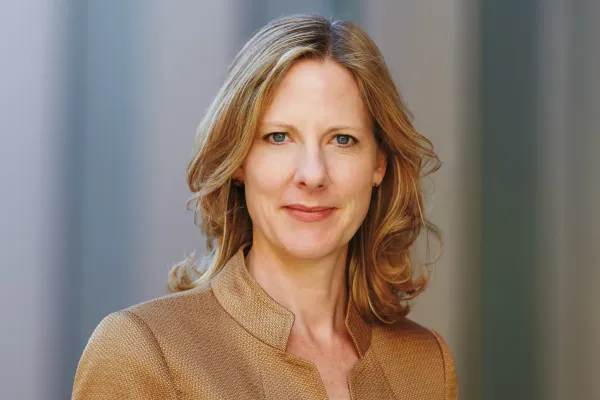This morning the White House revealed an initiative I’ve been developing with some colleagues for about six months. Specifically, we’ve been working to help long-term investors find better and more aligned access to new and promising ventures focused on resource innovation. Here’s part of the White House release: “A consortium of long-term investors, including major pension funds and endowments, is committing to build a new nonprofit investment intermediary that identifies, screens, and assesses high-potential companies and projects for commercial investment that could also produce impactful and profitable solutions to climate change.” Yes, we are in fact doing that. And, no, we are not concerned that the cleantech crater is still smoldering up on Sand Hill Road. We simply believe that competitive, risk-adjusted investment returns can and will be generated by catalyzing solutions to the climate crisis.
Consider this: By 2050, the world population will reach 10 billion people, and the consumption of natural resources is expected to increase fourfold above current rates. Even if you think today’s resource industries will look a lot like tomorrow’s industries, there’s still a massive gap to fill in terms of supply and demand. You don’t have to be a hippie to predict that some new resource-related ventures — specifically in energy, agriculture, waste and water — could become the most profitable companies for generations to come. Any investor with a time horizon extending out even a single decade really has no choice but to pay attention to this issue.
And — good news — most of them are thinking about these issues! But whereas long-term investors often recognize the importance of climate change, they don’t have much they can actually do about it. To put it succinctly: Institutional investors are finding it increasingly difficult to access these long-duration opportunities in ways that align with their own long-term objectives. Most investors want to hold these assets long enough for them to reflect certain macro themes. Unfortunately, most existing fund structures don’t seem to accommodate the time horizon necessary to hold such assets, or the capital required to scale them. As such, most long-term investors have simply been ignoring the opportunity set, in turn creating a negative feedback loop: The investment opportunity set shrinks owing to a lack of available capital, which results in making these very opportunities even more difficult for willing investors to access.
To break the cycle, and to unlock the much-needed capital for the sector, many people are desperately searching for innovative fund structures or novel complex financial instruments that allow for significant capital to flow toward long-duration projects. If the stakes weren’t so high in all of this, I might actually find this quest for a long-term, large investment vehicle amusing. Why? You know those reading glasses you’ve been searching for all over your house? Yeah? Well, they’re on your head. Translation: Most people do not see pension funds for what they really are: big, intergenerational investment organizations that could, with the appropriate internal resources, back innovative energy, agriculture or water companies. Crazy talk? Maybe.
But take the example of infrastructure as an asset class. Thirty years ago, infrastructure wasn’t even thought of as an investable asset. Today, hundreds of billions of dollars are flowing into infrastructure assets, and some estimates suggest this could pass $1 trillion in the next decade. Interestingly, the asset class only matured when large public pensions began creating in-house teams of professionals that could bypass funds and work strategically with “platform companies” that offered efficiency, scale and time. In short, the simple act of reconceptualizing the way in which these Giants accessed infrastructure transformed it into a completely “new” asset class.
This reconceptualization is the same thing we need to do with the whole resource innovation investment ecosystem. We need to rethink the access point.
Today’s White House announcement refers to the launch of an “aligned intermediary” which will specifically seek to provide a more aligned and scalable access point for long-term investors — such as families, foundations, endowments, pensions and sovereign funds — to the resource innovation investment ecosystem. It’s not a fund. It’s actually more of an impact investment bank that serves the buy-side needs of these long-term investors. It will coordinate the different types of LTIs (both early and late stage) and seek to maximize the likelihood of investment success. Confused? Check out this new white paper I wrote with Sarah Wood Kearney, Alicia Seiger and Elliott Donnelley II. In it we provide details on how such an intermediary could help a range of long-term investors get aligned access to resource innovation investment opportunities.
As we describe in the paper, the aligned intermediary’s sole mission should be to supplement the internal resources of long-term investors interested in both seed stage (families and foundations) and growth stage (Giants) opportunities. The new intermediary will help these investors identify, screen, assess and invest in high-potential companies that are producing the most impactful — and indeed profitable — solutions to climate change. In addition, it will reduce information asymmetries and transaction costs for those investors that are, or might one day be, interested in investing directly in the resource innovation ecosystem. In this way, the aligned intermediary will also serve as a focal point for the community of investors. For instance, all inbound deals could be redirected to the aligned intermediary’s team, and only those deals that meet specific underwriting criteria will be sent back to investors for their own internal review. Such a procedure would keep the demands on long-term investors’ internal resources to a minimum.
In short, the new intermediary will serve as a mechanism for unlocking direct-investment capital from foundations, families and Giants via proactive and deliberate collaboration and cooperation. Moreover, this intermediary will work with foundations to overlay grant and philanthropic capital on top of early-stage deals, thereby helping to bridge some resource innovation companies across “valleys of death.” In our view, the thoughtful combination of philanthropic grant capital, early stage seed capital, late stage growth capital, and even project finance, will maximize the likelihood of success for portfolio companies working with the aligned intermediaries.
Let me end with a point of clarification. The entity we’ve envisioned will work to help long-term investors make astounding financial returns from resource innovation investments. In our view, it’s only through eye-popping returns that we can hope to unlock the capital needed to prevent catastrophic impacts of climate change. Truly, this is a case in which capitalism and environment can go hand in hand, which is why we have been successful in attracting foundations, philanthropists, family offices and Giants to create this collaborative entity; a win-win “impact” investment bank.
Obviously, there are skeptics — in particular, and unsurprisingly, among those people who are already asset managers. But this initiative, while focusing on direct investments, should not be perceived as a threat to such intermediaries. Quite the contrary: We want to drive a bit of competition, and we’re going to show the world that this space is, once again, investable. Investors of any stripe in this woefully undercapitalized sector should agree that’s a good thing.
To achieve this initiative’s objectives, we plan to recruit a talented finance and resource team to run the aligned intermediary. (So, not me.) We know that we need to pay these people very well. And we also understand how to do that in the context of a not-for-profit. That said, the White House endorsement also helps. So too does the $1 billion from the Giants for growth capital and project financing, the millions from the families and foundations for seed opportunities and grants and the working capital that foundations will provide to get it off the ground. But what will draw many more people, we hope, is the chance to help these long-term investors make a profit while making the world a better place. Who could ask for a better job?






